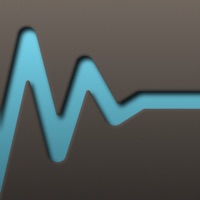
Escrito por Mani Consulting Limited Company
1. To hear how a noise gate performs in this respect, set its release very fast, pluck a low guitar string (or hit a bass note on the piano) and let ring out, listening as the note decays down to the threshold level and the gate starts to activate.
2. The abrupt change in volume from that process sounds unnatural and makes it obvious that you are using a noise gate plugin on the signal.
3. The simplest noise gate plugins simply set the volume to zero when the input level drops below a threshold.
4. Instead of using a gate that fluctuates between two states (open, closed), this plugin uses downward expansion to gently and smoothly reduce the gain as the input drops below the threshold setting.
5. This noise gate plugin has a unique smoothing filter to ensure that the gate makes as little noise as possible when opening and closing, while still being able to open and close very quickly.
6. If your noise gate allows a fast enough release time, you'll hear a buzzing noise as the gate rapidly flip-flops open and closed for a few moments before settling in the closed position.
7. The key challenge that all noise gate designs struggle to overcome is how to make sure the gate doesn't flutter open and closed several times at the end of a sound.
8. Of course, slowing the gate down or delaying its closing is not desirable because we need it to close as quickly as possible when the input signal ends and open immediately when it starts up again.
9. Each noise gate plugin handles this problem in a different way, and therefore each one has its own unique sound.
10. How to keep the gate from opening and closing in time with the oscillation of the sound waves? There are many ways to do it, but the basic idea is to slow the gate down somehow, so it can't open and shut too quickly.
11. So why do you buy another noise gate? There are 2 main reasons: clearer sound and more natural gate-closing sound.
Verificar aplicaciones o alternativas de PC compatibles
| Aplicación | Descargar | Calificación | Desarrollador |
|---|---|---|---|
 Noise Gate & Downward Expander Noise Gate & Downward Expander
|
Obtener aplicación o alternativas ↲ | 7 4.86
|
Mani Consulting Limited Company |
O siga la guía a continuación para usar en PC :
Elija la versión de su PC:
Requisitos de instalación del software:
Disponible para descarga directa. Descargar a continuación:
Ahora, abra la aplicación Emulator que ha instalado y busque su barra de búsqueda. Una vez que lo encontraste, escribe Noise Gate & Downward Expander en la barra de búsqueda y presione Buscar. Haga clic en Noise Gate & Downward Expandericono de la aplicación. Una ventana de Noise Gate & Downward Expander en Play Store o la tienda de aplicaciones se abrirá y mostrará Store en su aplicación de emulador. Ahora, presione el botón Instalar y, como en un iPhone o dispositivo Android, su aplicación comenzará a descargarse. Ahora hemos terminado.
Verá un ícono llamado "Todas las aplicaciones".
Haga clic en él y lo llevará a una página que contiene todas sus aplicaciones instaladas.
Deberías ver el icono. Haga clic en él y comience a usar la aplicación.
Obtén un APK compatible para PC
| Descargar | Desarrollador | Calificación | Versión actual |
|---|---|---|---|
| Descargar APK para PC » | Mani Consulting Limited Company | 4.86 | 1.0.4 |
Descargar Noise Gate & Downward Expander para Mac OS (Apple)
| Descargar | Desarrollador | Reseñas | Calificación |
|---|---|---|---|
| $4.99 para Mac OS | Mani Consulting Limited Company | 7 | 4.86 |
Spotify: Música y podcasts
TREBEL: Descarga música legal
Shazam: Descubre Música
YouTube Music
Musica XM internet conexión
eSound: Reproductor Música MP3
Amazon Music: Música y Podcast
Tonos de llamada iPhone TUUNES
GuitarTuna: Afinador Guitarra
Descargar musica sin internet
Mezquite Acordeón Diatónico
Deezer: Música y podcasts
GarageBand
Trending Music
Cloud Music Player - Listener